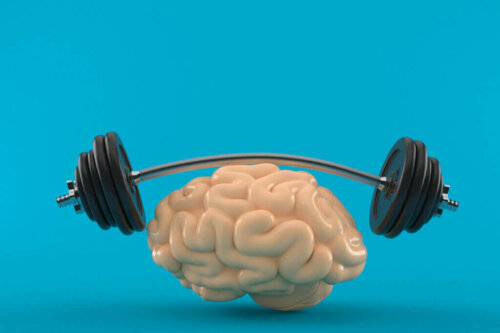What is Exercise-induced Compartment Syndrome?

The main symptom of exercise-induced compartment syndrome is pain. This usually appears in the limbs and is accompanied by a reduced ability to use the body part in question.
The pain is localized and is caused by the muscular and nervous system. The muscle becomes inflamed and hurts, while the nerves send misleading signals to the brain communicating the pain and a lack of strength.
It’s called compartment syndrome because the inflammation increases pressure on a particular compartment of the body. Thereby, this also increases the pressure on all of the structures that it contains, such as nerves.
Doing exercise can lead to inflamed muscles, which then become larger. If they get too big, they start to press on the layer covering the muscle fibers, called the fascia. The fasciae aren’t able to expand, so the area starts to hurt.
It’s not entirely clear how muscle inflammation caused by exercise develops into compartment syndrome. There are potentially many factors involved, such as poor posture or technique, lack of stretching, or pre-existing anatomical factors.
Risk factors
However, it’s possible to say that there are three possible risk factors:
- Type of sport: exercise-induced compartment syndrome has been observed more commonly in athletes who repeat high-impact movements, such as runners.
- Age: contrary to what you might think, this is actually more common in younger people. Clinical cases have appeared at various ages, but people under 30 are more at risk.
- Exercise intensity: the more repetitive the exercise, the greater the risk of muscular inflammation.

This doesn’t mean that all young athletes performing high-intensity, high-impact activities will suffer. Risk factors simply increase the possibility of developing the condition, but they’re by no means the only relevant factors.
Symptoms of exercise-induced compartment syndrome
The main symptom of compartment syndrome is pain. Usually, one of the limbs hurts because of the pressure that has built up in the compartment. The legs are the most common body part to suffer.
This pain will appear when exercising, normally a little time after starting. If you continue exercising, the pain will increase until you finally lose the full functionality. If you stop exercising and rest, the pain will subside in a few minutes. There are more complicated cases where the pain continues even after rest.
Along with the pain, there may be a tingling sensation in the same area or slightly further away, as well as muscle cramps. It might be the case that your leg hurts and your foot is tingling, for example.
This pain leads to reduced functionality, including a lack of strength and an inability to perform certain maneuvers or movements. In the example of the leg, this might mean that it’s impossible to lift your foot.
The inflammation will be difficult to identify. There might be an increase in muscle size that deforms the limb or a feeling of tightness that tugs at the skin. But many of these symptoms are subjective.
Compartment syndrome treatment
Whether caused by exercise or something else, the treatment will be roughly the same. Your doctor will suggest a series of measures that you can follow to ensure a speedy recovery.
The first measures will be more conservative and consist of resting and not exercising for a certain period of time.

As well as resting, you may be prescribed some anti-inflammatory creams. Keeping the limb elevated to improve circulation and applying a cold compress can also be helpful. If the pain is very intense, you may need physiotherapy and oral anti-inflammatory drugs, such as ibuprofen.
When conservative treatment fails, you may require surgery. This is a last resort and is reserved for specific clinical cases where the pain is extremely intense and there is the possibility of permanent damage to the muscle or nerves.
This surgery is called a fasciotomy and involves making an incision in the fascia of the inflamed muscle to release the pressure. It’s not a complicated procedure, but it needs to be performed by trauma specialists.
So, although you can start some basic treatment for your exercise-induced compartment syndrome, you should go to see your doctor as soon as you can. They will know whether or not to prescribe anti-inflammatories and will also monitor your progress in case you need further treatment.
All cited sources were thoroughly reviewed by our team to ensure their quality, reliability, currency, and validity. The bibliography of this article was considered reliable and of academic or scientific accuracy.
- Dalmau-Coll, A., et al. “Síndrome compartimental agudo en el pie.” Revista Española de Cirugía Ortopédica y Traumatología 55.3 (2011): 235-240.
- Johansen K, Watson J. Compartment syndrome: new insights. Semin Vasc Surg 1998; 11: 294-301.
- Velásquez Yucra, Claudia Vanessa. “Tratamiento fisioterapeútico en síndrome compartimental.” (2018).
This text is provided for informational purposes only and does not replace consultation with a professional. If in doubt, consult your specialist.








